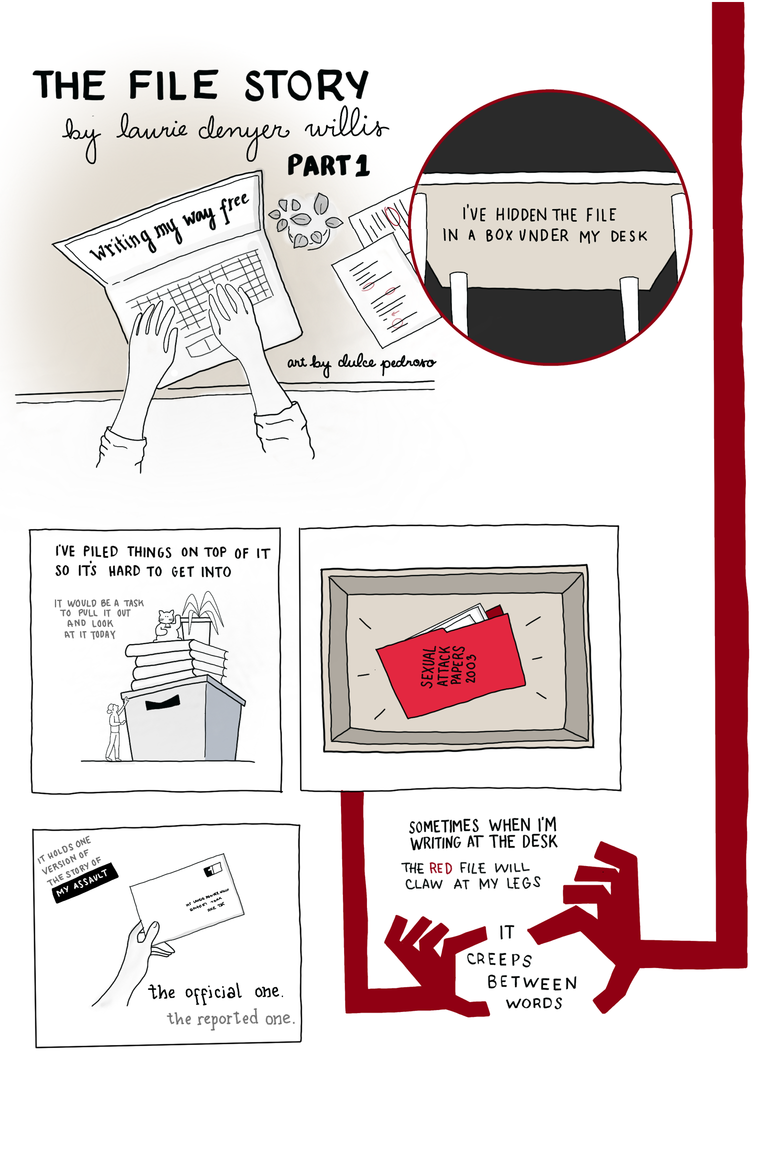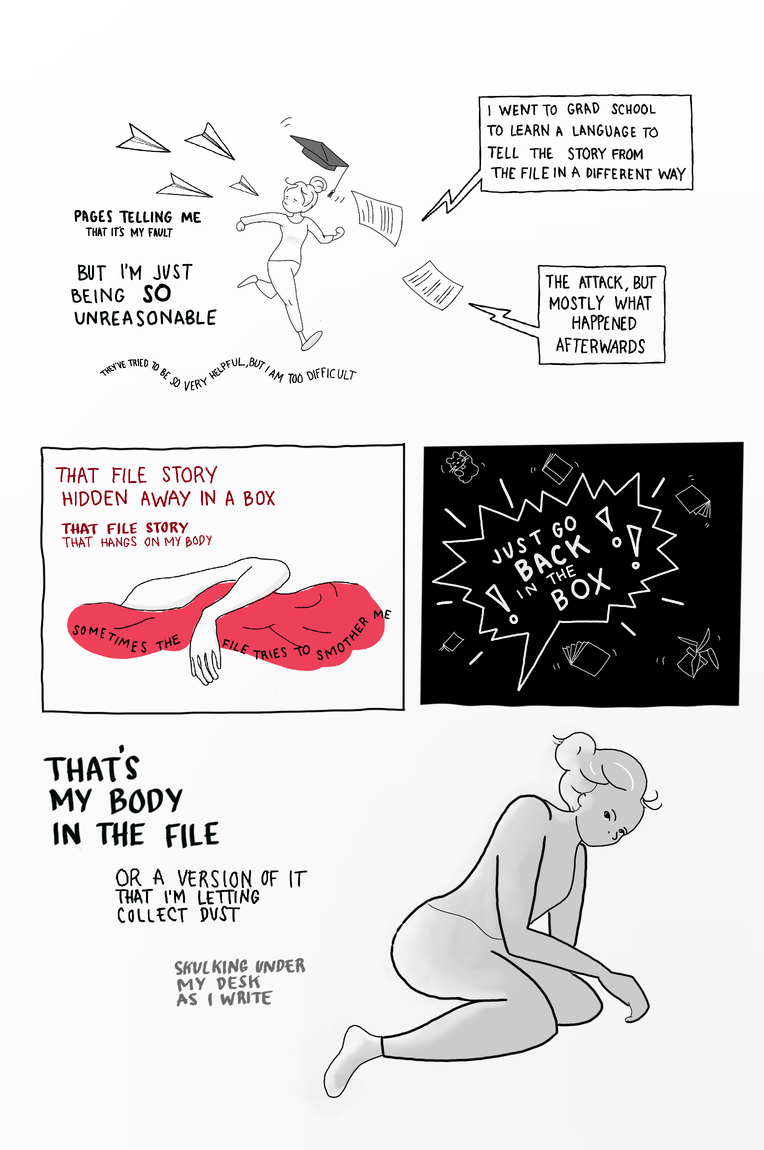



When certain forms of text and interview constitute captivity, the visual can offer fracture lines; unexpected openings and departures. Multimodal presentation can recalibrate the frequency and scale of a story and the work it does, creaking open obscured windows to reveal different kinds of possibilities. Here, around a story about sexual assault and the archive, multimodality offers a crack—the box, the file, the papers slip open—revealing, perhaps, new modes of conversing and sitting with assault, its uninvited and invited returns and its afterlife. As Lisa Stevenson (2014, 10) writes, the “imagistic rather than discursive modes of knowing” is a kind of uncertain hatch—if we open it, it requires us to listen and engage differently.
So much adjudication of my sexual assault relied on text and the public telling of my story, translated into words, codification, defensive positioning. This can be both painful and healing. Maybe at the same time. Here I am not engaging with that story and its codification, but rather offering up shards, fragments, and petals of a spectral narrative that floats outwards from the tale itself, spinning sensorial offerings; likely still both harmful and hope-filled.
As Ethiraj Gabriel Dattatreyan and Isaac Marrero-Guillamón (2019, 220) write, “multimodality offers a line of flight for an anthropology yet to come.” In other words, a way of encountering new modes of “plurality,” “collaboration” and “invention” to the stories we tell and contemplate meaning with; the stories we tell—or don’t—about ourselves that shape our ethnographic attendance and imagination.
References
Dattatreyan, Ethiraj Gabriel, and Isaac Marrero-Guillamón. 2019. “Introduction: Multimodal Anthropology and the Politics of Invention.” American Anthropologist 121, no. 1: 220–28.
Stevenson, Lisa. 2014. Life Beside Itself: Imagining Care in the Canadian Arctic. Berkeley: University of California Press.